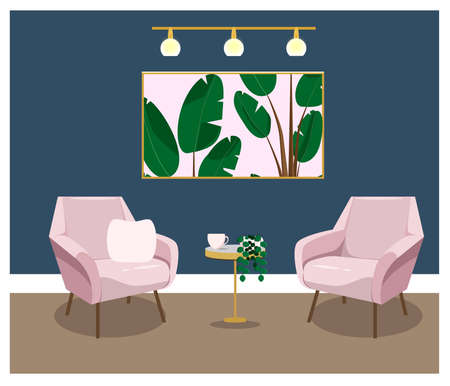Introduction to British Heritage in Interior Design
When delving into the world of British interior design, it becomes immediately apparent that its distinctive character is deeply rooted in the nation’s rich historical tapestry. From the stately homes of the Georgian era to the bold innovations of the Victorian period and the post-war embrace of eclecticism, each epoch has left an indelible mark on how Britons approach their living spaces. The enduring influence of these eras is not just a matter of aesthetics; it is also shaped by evolving social values, class distinctions, and responses to wider cultural movements. British heritage, therefore, is more than a backdrop—it is an active force that shapes tastes, design philosophies, and ultimately, the way people inhabit and personalise even the smallest of spaces. This layered context provides fertile ground for maximalist small space design, where tradition meets reinvention and historical motifs are reimagined for contemporary living.
2. A Legacy of Layers: Period Detail in Modest Spaces
Maximalist small space design in Britain is deeply indebted to the country’s long-standing affinity for layering—an aesthetic rooted in historical interiors that favoured richness and intricacy even within modest footprints. This approach, often described as a “legacy of layers,” involves the thoughtful accumulation of patina, patterns, and textures to create depth and narrative. British heritage homes, from the Victorian era’s love of florals and chintz to Edwardian geometric ornamentation, provide a wellspring of inspiration for today’s maximalist small spaces.
The Art of Layering: British Style Across Eras
British interiors have always excelled at mixing old and new, refined and rustic, delicate and robust. In compact urban flats or terraced cottages, this translates into the strategic use of historic motifs to enrich limited square footage without overwhelming it. Modern maximalists reinterpret these traditions by blending period details—think William Morris wallpaper prints or pressed-tin ceilings—with contemporary furnishings and clever storage solutions.
Key Elements Adapted for Small Spaces
| Historic Influence | Characteristic Feature | Modern Maximalist Adaptation |
|---|---|---|
| Victorian Florals | Layered textiles, botanical wallpapers | Accent walls, upholstered furniture, decorative cushions |
| Edwardian Ornamentation | Geometric mouldings, stained glass | Moulded mirror frames, compact leadlight panels |
| Georgian Symmetry | Balanced layouts, classical motifs | Gallery walls with symmetrical art arrangement |
| Cottagecore Charm | Handcrafted ceramics, embroidered linens | Shelving vignettes, layered table settings in nooks |
Pushing Boundaries with Texture and Patina
The British penchant for lived-in comfort is expressed through tactile layering: velvet drapes beside worn leather armchairs; aged brass hardware set against vibrant paintwork; stacks of books softening hard architectural lines. In smaller homes, these elements are scaled down yet never skimp on character—the tiniest hallway can host an ornate console or a corridor can become a library with carefully arranged shelves. By embracing period detailing and layering techniques honed over centuries, British maximalism ensures that even the most modest spaces feel storied, dynamic, and unmistakably personal.

3. The Collectors’ Spirit: Curated Clutter and Meaningful Objects
One of the most distinctive threads running through British maximalist interiors is the celebrated tradition of collecting. This passion for amassing and displaying memorabilia, art, and antiques is deeply rooted in British heritage, reflecting both historical curiosity and a love for storytelling through objects. In even the smallest of spaces, Britons have mastered the art of ‘organised clutter’, where every shelf and mantlepiece tells a story.
The Victorian era, with its cabinets of curiosities and penchant for eclectic displays, left an indelible mark on how the British approach interior design. Today’s maximalist small spaces echo this spirit by layering family heirlooms with charity shop finds, vintage postcards with contemporary artwork, and inherited china with quirky ceramics from local makers. The result is a home that feels lived-in, personal, and distinctly British.
This curated approach to clutter is not mere accumulation; it’s about imbuing rooms with meaning. Each object—be it a battered cricket bat, a collection of Royal Doulton figurines, or framed theatre tickets—serves as a conversation starter and a nod to personal or national history. Rather than striving for minimalism or sterility, British maximalists embrace the beauty of variety and narrative richness.
Space constraints are viewed less as limitations and more as creative opportunities. Ingenious shelving systems, under-stair alcoves, or even window sills become stages for displaying treasures. It’s not unusual to find walls densely hung with portraits and landscapes in mismatched frames—a visual homage to Britain’s grand country houses, reimagined for modern city flats or quaint cottages.
This collector’s ethos is quintessentially British: charmingly unpretentious, slightly eccentric, yet always underpinned by a sense of order within apparent chaos. The result is an aesthetic where every inch counts and every object matters—a celebration of both personal narrative and shared cultural history within the smallest of footprints.
Eclecticism and Eccentricity: The Art of Mixing Eras and Styles
One of the most captivating aspects of British maximalist design, especially within the confines of small spaces, is the national penchant for eclecticism and eccentricity. Rather than adhering to a single style or period, British interiors often revel in a confident blend of high and low, ancient and modern. This approach has deep roots in the UK’s layered history—a patchwork nation shaped by centuries of trade, migration, monarchy, and rebellion—resulting in homes that are visually rich and intellectually stimulating.
The Confidence to Mix
British heritage endows homeowners with a certain bravado when it comes to curating their interiors. It is not uncommon to see a Victorian mahogany sideboard sharing space with mid-century Scandinavian chairs, all set against a backdrop of William Morris wallpaper. The result is a space that feels lived-in and storied, with every object suggesting its own narrative. This blending is not haphazard but rather an intentional composition that welcomes contrast and celebrates individuality.
Conversation Starters: Combining Elements
In British maximalist small space design, every surface becomes an opportunity for juxtaposition. Heirloom silver spoons may jostle alongside quirky charity shop finds; bold contemporary art might hang above antique fireplaces. These unexpected pairings are key to creating environments that spark conversation—a quality deeply valued in British social culture, where witty banter and storytelling are cherished traditions.
Key Pairings in British Maximalist Design
| Historic Element | Modern/Unexpected Pairing | Effect on Space |
|---|---|---|
| Edwardian mantelpiece | Abstract neon artwork | Cultural dialogue across eras |
| Chintz upholstery | Industrial metal shelving | Playful contrast between soft and hard textures |
| Moorish tiles (Victorian) | Bespoke resin coffee table | Global meets local craftsmanship |
| Family portrait (Georgian) | Punk-inspired scatter cushions | Anarchic twist on tradition |
| Antique rug (Persian) | Minimalist LED lighting | Warmth balanced with modern clarity |
Eccentricity as a Virtue
This delightful eclecticism is underpinned by a uniquely British celebration of eccentricity. Whether it’s an unexpected colour palette inspired by Bloomsbury Group artists or a collection of whimsical Staffordshire dog figurines arranged atop Regency furniture, these personal touches reinforce the idea that one’s home should be as idiosyncratic as its inhabitants. In essence, British maximalism transforms even the smallest flat into a cabinet of curiosities—one where every detail invites exploration and every combination sparks fresh appreciation for the past meeting the present.
5. Heritage Colour Palettes and Local Materials
The resurgence of heritage-inspired colour palettes and materials is central to how British maximalism manifests in small spaces today. Drawing from centuries of design tradition, homeowners are increasingly looking to the rich, saturated hues found in historic country houses—think deep forest greens, regal burgundies, and dusky blues—to evoke a sense of continuity with Britain’s decorative past. These timeless shades not only add warmth and depth to compact interiors but also foster a feeling of intimacy reminiscent of classic British drawing rooms.
Wallpaper, long cherished in British homes, is enjoying a renaissance. Iconic patterns such as William Morris florals, Arts and Crafts motifs, and Georgian stripes are being reimagined for contemporary small spaces. In narrow halls or petite sitting rooms, a single feature wall clad in traditional wallpaper instantly injects visual interest while nodding to the layered histories that define so many UK properties. The tactile quality of heritage wallpapers—whether hand-blocked or digitally recreated—adds another dimension to maximalist design, ensuring even the smallest nook feels considered and storied.
Alongside colour and pattern, the use of locally sourced materials is a defining element. British heritage places great value on craftsmanship and locality; thus, natural stone from regional quarries, reclaimed oak beams, or hand-thrown ceramics frequently make appearances in maximalist schemes. Even in modest city flats, incorporating Sheffield steel hardware or Cotswold limestone tiles connects the present-day space to the enduring traditions of British making. These details ground a home’s maximalist aesthetic in its geographical context and honour a distinctly local sense of place.
Ultimately, this return to historic colourways, classic wallpapers, and local materials allows even the most compact British homes to resonate with character and authenticity. It’s an approach that celebrates not only abundance but also provenance—the unique layers of history that each palette choice or material selection carries with it.
6. Contemporary British Maximalism: A Modern Reimagining
The new wave of British designers is rewriting the narrative of maximalism, embracing heritage while crafting spaces fit for modern living. Today’s approach combines an appreciation for traditional motifs—think William Morris florals, Arts & Crafts geometrics, or Victorian chintz—with a sharp eye on the practicalities of urban life and smaller footprints. Rather than slavishly recreating period rooms, designers like Luke Edward Hall and Matilda Goad remix classic patterns, textures, and colours in unexpected ways that resonate with a new generation.
Heritage Reimagined for Compact Living
With property sizes shrinking in cities like London, maximalist design has evolved into a clever balancing act: how to retain that quintessentially British sense of layered richness without overwhelming limited square footage. Contemporary interiors feature curated clusters of art and memorabilia, bold wallpaper accents instead of full-room saturation, and statement furniture pieces that double as storage. This nod to heritage—an antique lamp here, a tapestry cushion there—is always tempered by practicality and playfulness.
Colour and Pattern: A Fresh Perspective
Today’s maximalists are unafraid to experiment with colour, but rather than the heavy brocades and sombre hues of the past, they favour lighter palettes punctuated by pops of jewel tones or unexpected neons. Pattern mixing remains key, but it’s handled with restraint: a William Morris print might be set against sleek mid-century lines or offset by contemporary abstract art. This creates a dialogue between old and new that feels thoroughly current yet distinctly British.
Eclecticism with Purpose
The modern British maximalist ethos is about storytelling—each object holds personal meaning or references national history, from Staffordshire dogs perched on a mantelpiece to reupholstered Georgian chairs in whimsical fabrics. But in compact homes, every item must earn its place; excess is edited in favour of intentional layering. The result is spaces brimming with character and comfort that reflect both the owner’s individuality and Britain’s rich design legacy.
In summary, today’s British maximalism is less about visual overload and more about thoughtful curation—a spirited blend of past and present, heritage and innovation. By reinterpreting tradition for contemporary lifestyles, this movement ensures that even the smallest spaces can become vibrant showcases of British culture and creativity.


